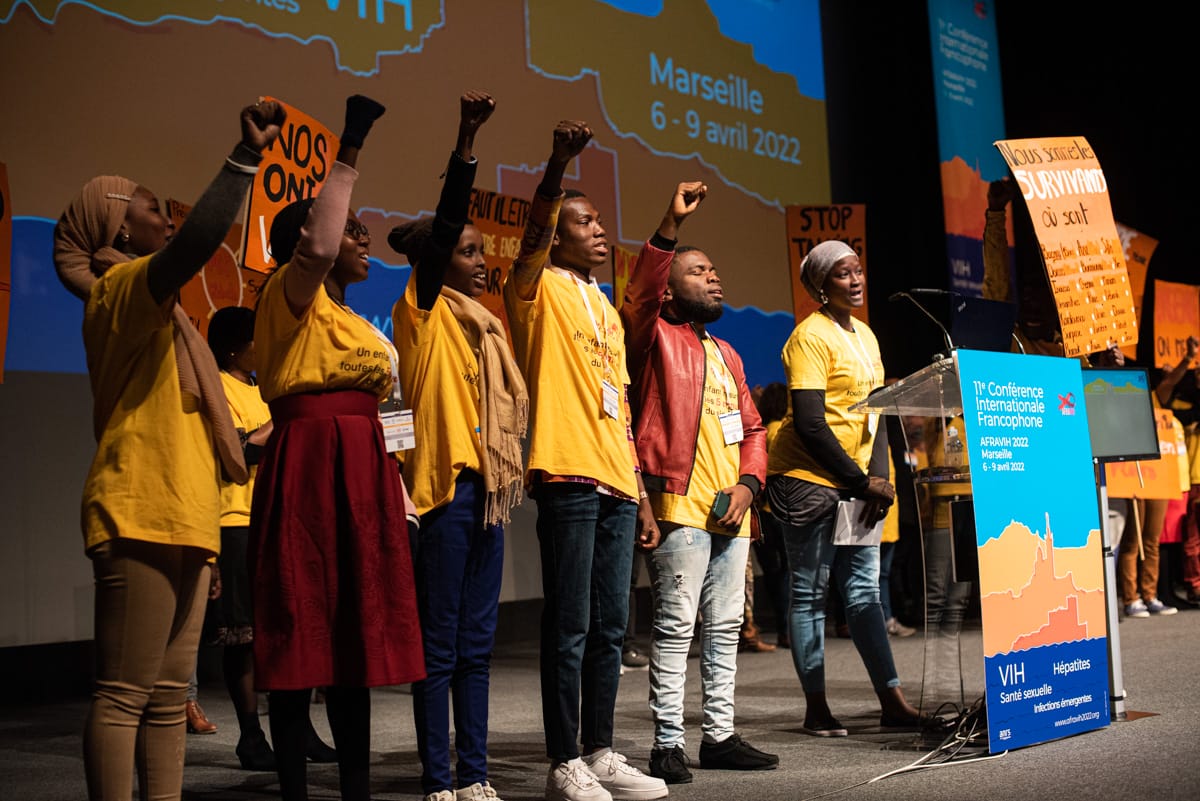What message do you bring to L’Initiative’s Steering Committee?
L’Initiative has developed tools and expertise adapted to the specific issues faced by civil society.
The civil society representatives, who are members of the Steering Committee, work in particular to ensure that community health has a meaningful place so that the voice of the people affected is heard and taken into account in response to the three pandemics. This message has been heard loud and clear by L’Initiative: the community component is now integrated into most of its work. L’Initiative has developed tools and expertise adapted to the specific issues faced by civil society. L’Initiative also regularly organizes webinars and conferences on this topic.
Sidaction supports Grandir ensemble, an African network of organizations working to provide care and support to children and adolescents. What is the organization’s history and primary objectives?
In 2005, Sidaction participated in the implementation of the Grandir ensemble program, which aimed to strengthen and support the development of pediatric HIV and AIDS care in 11 countries in West Africa, Central Africa, and Djibouti. The program brought together eighteen member organizations and was funded at the time by the French Development Agency. It represented a cohort of around 6,000 children and adolescents. In light of the positive results it had achieved, in 2017, it set up the Grandir ensemble network. This network currently comprises organizations from 11 French-speaking countries—six are targeted more closely under the project funded by L’Initiative (Benin, Burkina Faso, Burundi, Cameroon, Congo, Ivory Coast, Djibouti, Mali, Democratic Republic of Congo, Chad, Togo)—and aims to support and promote the expertise of its members while stimulating a global and effective response to the prevention and care of HIV and AIDS among children and adolescents.
The network provides, in particular, capacity building to caregivers (community health workers and the public sector), drafts national strategic documents, and sets up focal points in the different regions of the countries involved. The goal is to reduce the morbidity and mortality of young people living with HIV and AIDS while strengthening their leadership and involvement in the response to the pandemic. Grandir ensemble also gives young people and adolescents living with HIV the opportunity to get their voices heard in a French-speaking context, where it has long been stifled due to a lack of support mechanisms and persistent discrimination.
Sidaction, which organizes training with network member organizations, has been implementing this capacity-building funded by L’Initiative since the launch of the network. We want to gain recognition of community expertise and the impact of peer education in the care of children and adolescents affected by HIV and ensure that they are systematically integrated into national programs responding to the HIV pandemic.
Grandir ensemble also gives young people and adolescents living with HIV the opportunity to get their voices heard in a French-speaking context, where it has long been stifled due to a lack of support mechanisms and persistent discrimination.
How is peer education carried out by the Grandir ensemble network?
Peer educators are young people living with HIV trained in psychosocial care, prevention, and support for other young people living with HIV. They are focal points that young people in the same age group can call upon and who participate in improving the service provision by supporting or carrying out caregiver tasks. Their role is very important, for example, to support disclosure of status, which is always a pivotal moment that comes with specific difficulties for young people, particularly psychological and sexual health-related issues.
In addition, some of these young people are trained in advocacy to involve them in decision-making concerning the health and care of adolescents. One of the ambassadors of the Grandir ensemble network, Amanda Dushime, took to the podium with Emmanuel Macron during the 6th Global Fund Replenishment Conference in Lyon in October 2019. Aged 18, she spoke about these young people living with HIV and the discrimination they experience.
Why is the role of these community stakeholders fundamental?
In countries where health systems are still fragile, community organizations are often the first point of access to care for people in the community.
In countries where health systems are still fragile, community organizations are often the first point of access to care for people in the community. They allow all population groups to be informed and be referred to dedicated support facilities. For example, most community HIV organizations today offer very effective referral systems for tuberculosis.
We have also seen it with COVID-19: community HIV organizations have been at the forefront of awareness-raising and testing access. In addition, by decompartmentalizing the health and social sectors, they are working to change the purely medical vision of health, which tends to be carried out by institutions. This approach, which considers the beneficiaries of health systems in all aspects of their humanity, is fundamental to the care of patients, particularly when responding to pandemics.










